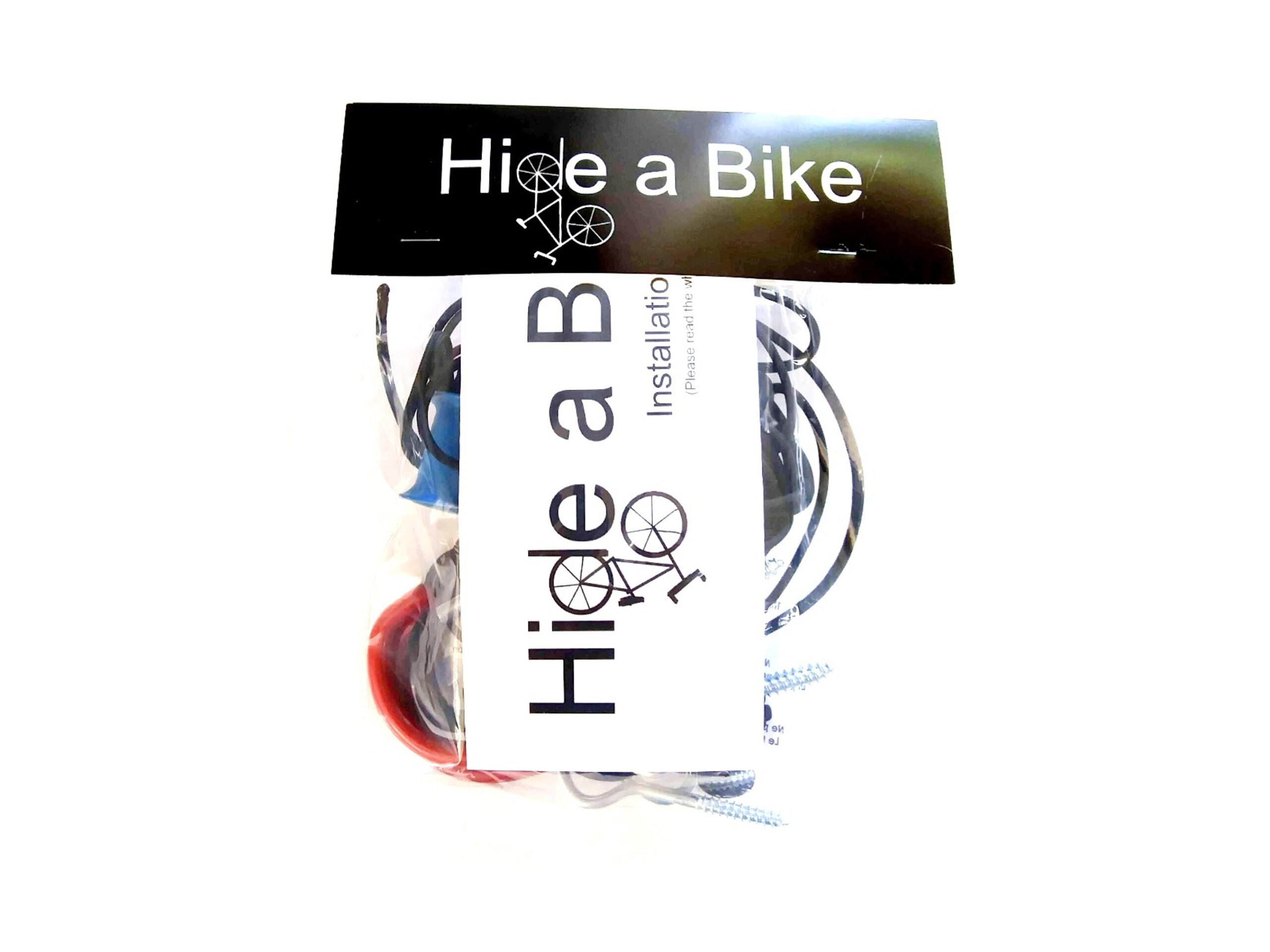Step-By-Step Guide On How To Teach Your Kids To Ride A Bike

Discover how to teach your child to ride a bike with our comprehensive guide, from gear selection to celebrating milestones.
*This article may contain affiliate ads that help to support this site*
Watching your child learn to ride a bike is not just a significant milestone; it’s a timeless rite of passage that fosters independence, confidence, and a love for adventure. As a parent, you’re about to embark on an exciting journey of teaching your kid to ride a bike. This process may seem daunting at first, but with the right guidance and a positive attitude, you can make it a fun and memorable experience. In this guide, we’ll walk you through the steps and techniques that will help your child master the art of biking. From choosing the perfect bike to celebrating those triumphant first solo rides, we’ve got you covered. By the end of this article, you’ll be well-equipped to teach your child to ride with confidence. Let’s get started!
1. Preparing For Success
Before your child embarks on their exciting bike-riding journey, thorough preparation is key to ensure their safety, comfort, and a positive learning experience. In this section, we’ll explore the critical steps to get you started.
Choosing the Right Bike: Selecting the appropriate bike is paramount. It should match your child’s age, size, and skill level. Ideally, the bike should allow your child to touch the ground while seated, promoting confidence and balance. A smaller, lightweight frame is generally best for beginners. As your child grows, you can progressively upgrade to larger bikes.
Investing in Safety Gear: Safety should be a non-negotiable priority. Ensure your child wears a well-fitted helmet, protecting their head in case of a fall. Additionally, provide knee and elbow pads to safeguard against scrapes and bruises. Gloves offer hand protection, and closed-toe shoes ensure stability on the pedals. This gear not only enhances safety but also instills a sense of responsibility and good habits from the start.
Bike Maintenance: A properly maintained bike is crucial for a successful learning experience. Before each lesson, inspect the tires, brakes, and other components to ensure they’re in good working condition. Tighten any loose bolts and lubricate the chain as needed. Regular maintenance not only guarantees safety but also teaches your child the importance of caring for their equipment.
By addressing these aspects in advance, you’ll provide your child with the best tools for success. The right bike, safety gear, and a well-maintained bicycle lay the foundation for a smooth and enjoyable learning journey, helping your child become a confident and skilled rider.
2. Setting The Stage
Choosing the right bike and safety gear is just the beginning. Now, it’s time to set the stage for your child’s bike-riding adventure. This section delves into the importance of the learning environment and your role as a supportive coach.
Selecting the Ideal Location: Picking the right location for bike lessons is crucial. Look for a flat, smooth, and traffic-free area such as an empty parking lot, a quiet cul-de-sac, or a local park. The absence of traffic and obstacles will boost your child’s confidence and reduce potential distractions.
Ensuring Safety and Freedom: Safety is paramount during the early stages of bike riding. Remove any potential hazards such as loose gravel, potholes, or debris from the practice area. Ensure your child’s practice space is wide open and uncluttered. This will give them the freedom to concentrate on mastering their new skill without unnecessary worry.
Fostering a Positive Attitude: As a parent or mentor, your attitude plays a significant role in the learning process. Maintain a positive and encouraging demeanor throughout the lessons. Offer praise and support, even when your child faces challenges. Encourage them to learn at their own pace and reassure them that making mistakes is part of the learning journey.
Patience and Support: Each child learns at their own pace, so be patient. Avoid putting undue pressure on your child, and remember that some might take longer to master biking than others. Support and encouragement go a long way in making the learning process enjoyable and stress-free.
By choosing the right location, ensuring safety, and providing unwavering support, you’re setting the stage for a successful bike-riding experience. The ideal environment will instill confidence in your child and create fond memories that will last a lifetime.
3. Teaching The Basics
Now that you’ve created a safe and encouraging environment, it’s time to introduce your child to the fundamental aspects of bike riding. This section will focus on teaching the basics, from understanding the bike’s components to practicing essential maneuvers.
Explaining the Bike’s Components and Controls: Start by familiarizing your child with the bike’s components. Show them the pedals, handlebars, brakes, and how to use them. Explain the purpose of each part, emphasizing that a bike moves forward when you pedal and stops when you use the brakes. Understanding these basic controls is the foundation for any aspiring cyclist.
Balancing Exercises: Before your child hops on and starts pedaling, help them develop their balance. Have your child straddle the bike with both feet on the ground and practice leaning from side to side. Encourage them to shift their weight and feel how it affects the bike’s balance. These exercises will help them develop a sense of equilibrium and confidence in maintaining an upright position.
Starting and Stopping: Teach your child how to start and stop the bike safely. Practice starting with one foot on the ground and one on a pedal. Show them how to push off and then lift their second foot onto the pedal as they gain momentum. Equally important is teaching them to use the brakes to slow down and come to a complete stop. Ensure they understand the need to brake gently and progressively, rather than abruptly.
These basic lessons will provide your child with a solid foundation for bike riding. The understanding of bike controls, balance, and the skills needed to start and stop safely are essential building blocks for their journey towards becoming a confident cyclist.

Hide A Bike Kit
Is your garage starting to become a mess? Save space by storing your bikes flat against the ceiling.
4. Learning To Balance
Learning to balance is a critical step in your child’s journey to becoming a proficient cyclist. In this section, we’ll explore the use of training wheels and balance bikes, as well as how to transition from these aids to riding on two wheels.
The Role of Training Wheels: Training wheels can be immensely helpful for beginners. They provide stability and prevent the bike from tipping over, which can boost your child’s confidence. When introducing training wheels, ensure they’re set at the right height, allowing the bike to lean slightly. This slight tilt will teach your child to balance and steer.
Balance Bikes: An alternative to training wheels is a balance bike. These are small bikes without pedals, and they teach children to balance right from the start. By scooting themselves forward, kids learn to maintain balance, steer, and control their speed. Many children find the transition to a regular bike after using a balance bike to be smoother and quicker.
Transitioning to Two Wheels: Once your child has gained some confidence and control with training wheels or a balance bike, it’s time to consider transitioning to two-wheel riding. Raise the training wheels slightly, allowing the bike to lean a bit more. Encourage your child to practice gentle turns and balance on two wheels for short distances. Gradually, lower the training wheels until they’re no longer needed.
The process of learning to balance may take time, but it’s a crucial step in developing core cycling skills. Training wheels and balance bikes provide excellent tools to help your child gradually gain the balance and coordination required for two-wheel riding. With patience and consistent practice, your child will soon be ready to ride solo.
5. Riding With Confidence
As your child progresses in their bike-riding journey and begins to develop balance and basic skills, it’s time to focus on more advanced techniques. In this section, we’ll explore techniques for steering, maneuvering, and building your child’s confidence on two wheels.
Steering and Maneuvering: Teaching your child how to steer and maneuver the bike is essential for their overall biking proficiency. Start with basic exercises like weaving between cones or navigating gentle curves. Encourage your child to look ahead and focus on where they want to go rather than what’s immediately in front of them. This will help improve their control and agility on the bike.
Awareness of Surroundings: An important aspect of riding with confidence is teaching your child to be aware of their surroundings. Emphasize the importance of checking for oncoming traffic, pedestrians, and obstacles. Teach them to use hand signals to indicate turns and stops. This awareness will instill good habits for safe riding and help prevent accidents.
Proper Posture and Hand Placement: Show your child the importance of maintaining proper posture while riding. A relaxed grip on the handlebars and a straight back contribute to stability and control. Encourage them to keep their weight centered over the bike and use their body weight to initiate turns. Correct posture and hand placement are key to efficient and confident biking.
Practice is key to building confidence in these advanced techniques. Gradually introduce challenges like navigating more complex terrain and negotiating sharper turns. The more experience your child gains, the more confident they will become in handling various riding situations.
By teaching your child how to steer, maneuver, and be aware of their surroundings while maintaining proper posture, you’re helping them become a more confident and skilled cyclist. These skills are not only essential for safe biking but also for enjoying the freedom and exhilaration of cycling.
6. Overcoming Common Challenges
Teaching your child to ride a bike is a rewarding experience, but it comes with its fair share of challenges. In this section, we’ll discuss common fears and setbacks your child may encounter and how to help them overcome these obstacles.
Dealing with Fear: Fear is a common barrier for kids learning to ride a bike. Your child may be afraid of falling or getting hurt. Acknowledge their fears and reassure them that it’s okay to feel this way. Encourage them to start with what they’re comfortable with, whether it’s using training wheels, riding on flat terrain, or wearing protective gear. Gradually, they’ll build the confidence to tackle more challenges.
Patience and Persistence: The process of learning to ride a bike can be frustrating at times. It’s essential to emphasize the importance of patience and persistence. Let your child know that making mistakes is part of the learning process, and each setback is an opportunity to improve. Celebrate their small victories and provide support when they face difficulties.
Gradual Independence: As your child becomes more confident on their bike, you can gradually reduce your involvement. Encourage them to take short rides on their own within a safe and familiar area, but always supervise from a distance. This gradual independence will boost their self-assurance and sense of accomplishment.
Solo Rides: The ultimate goal is for your child to ride independently. Encourage them to practice riding without your presence, but within a safe neighborhood or park. Be sure to set boundaries and safety guidelines for solo rides.
Facing and overcoming challenges is an essential part of the learning process. By addressing fears, promoting patience and persistence, and gradually allowing your child to ride independently, you’ll help them build confidence and resilience. Riding a bike is not just about mastering the physical skills but also about developing a resilient and determined mindset.

Hide-A-Bike Installation Guide
If you want to put together a Hide-A-Bike kit for yourself, just download these easy to follow, step-by-step directions, complete with a full hardware and parts list.
7. Celebrating Milestones
As your child progresses on their bike-riding journey, it’s important to celebrate their achievements, both big and small. This section will focus on acknowledging their progress and fostering a love for cycling that will last a lifetime.
Acknowledging Your Child’s Progress: Throughout the learning process, take the time to acknowledge and celebrate your child’s milestones. Whether it’s their first successful pedal stroke, their ability to balance on two wheels, or completing their first solo ride, make these moments special. Offer praise and positive reinforcement to boost their self-esteem.
Setting and Rewarding Milestones: Set achievable milestones and goals for your child. This could include riding a certain distance, conquering a challenging hill, or mastering a particular maneuver. When they reach these milestones, celebrate with a reward or a special treat. Rewards can be a powerful motivator for children, encouraging them to keep improving.
Encouraging a Lifelong Love of Cycling: As your child becomes more proficient, foster a lifelong love of cycling. Plan family bike rides, explore new trails together, and make biking a part of your family’s recreational activities. The more your child associates biking with fun and adventure, the more likely they are to continue riding into their teenage and adult years.
Safety Reminders: Even as you celebrate your child’s achievements, it’s crucial to continually reinforce the importance of safety. Remind them to always wear their helmet and other protective gear. Teach them to follow the rules of the road and the importance of being aware of their surroundings.
Celebrating your child’s milestones and nurturing their love for cycling is a wonderful way to cap off their learning experience. By acknowledging their progress, setting achievable goals, and emphasizing safety, you’ll instill a passion for biking that can last a lifetime and create lasting memories together.
Conclusion
Teaching your child to ride a bike is a remarkable journey filled with valuable life lessons, shared experiences, and countless memorable moments. From selecting the perfect bike to celebrating their achievements, the process is more than just a practical skill; it’s an opportunity to nurture confidence, resilience, and a lifelong love for cycling. As you’ve discovered in this comprehensive guide, each stage of learning to ride a bike is significant, and your guidance and patience play a pivotal role in your child’s success. Remember, it’s not just about the destination; it’s the joy of the ride. Embrace the challenges, cherish the milestones, and create lasting memories together. The freedom and exhilaration of cycling will undoubtedly be a cherished part of your child’s journey into adulthood.
Share This Article With A Friend
Did You Read This Whole Article?

You deserve a gift! Enter your email to receive a FREE copy of the Hide-A-Bike Installation Guide! And once a month we will send you a newsletter with the best deals on the internet for bicycle gear and accessories.
About Hide A Bike

Save space by keeping your bike flat against the ceiling with the original easy and convenient bicycle storage solution.
Thank You For Visiting!

You deserve a gift! Enter your email to receive a FREE copy of the Hide-A-Bike Installation guide. And once a month we will send you a newsletter with links to our best finds on bicycle gear and accessories.
Share This Article:
Most Popular Articles:
Article Categories:
Related Articles:

Wheels Of Change: The Role Of Bicycles For Social Justice

Explore The Unique Bond Of Biking With Your Dog






